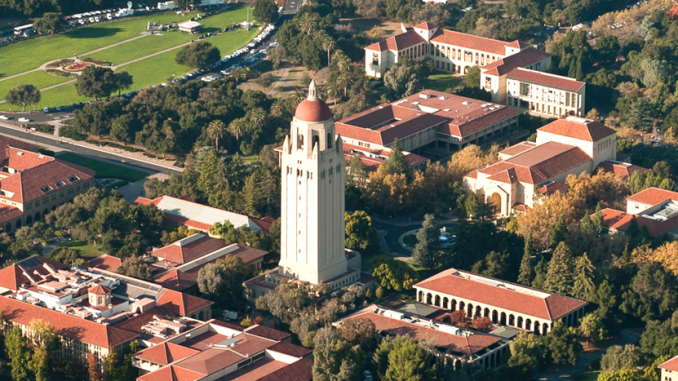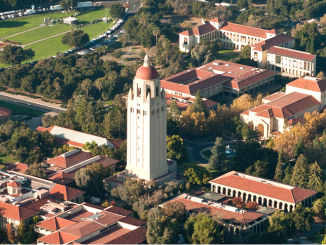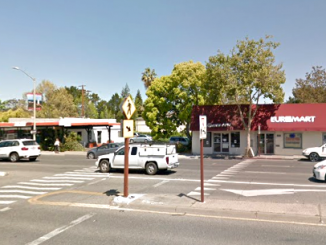
BY ELAINE GOODMAN
Daily Post Correspondent
Stanford University’s pledge to not increase the number of solo drivers entering and leaving campus at rush hour is coming under scrutiny, as the university has proposed adding 2.275 million square feet of academic buildings over the next 18 years.
“Members of the Palo Alto community appreciate the university’s focus on reducing commute trips to/from campus by single-occupant vehicles (SOV) during peak commute hours but are increasingly skeptical that the university’s trip reduction programs are living up to their promise,” Palo Alto Mayor Greg Scharff wrote to the Santa Clara County planning office in March.
Trip reduction is likely to be one topic of discussion tonight, as the Palo Alto City Council hears a presentation on Stanford’s growth plan, called the 2018 General Use Permit. In addition to the new square footage for academic and support buildings, the proposal includes 3,150 additional units of housing.
Another 40,000 square feet is proposed for a child care center or for transportation-oriented uses, such as a transit hub.
All of the new construction would be within Stanford’s academic growth boundary, avoiding development in the foothills during the period covered by the new permit. The plan covers the years 2018 through 2035.
Because the development would occur in unincorporated Santa Clara County, the county will decide whether to approve Stanford’s proposal. An environmental impact report for the plan was released this month; a public comment period will run through Dec. 4.
Approval of the 2018 permit would continue the steady growth seen under the current 2000 General Use Permit, which allows 2.035 million square feet of new academic and support space. As of mid-2015, Stanford had built or received permits for about 70% of that square footage; the university said it expects to have permits for the remaining square feet by fall 2018.
Housing
The university is building all of the 3,018 housing units allowed by the 2000 permit, and on top of that received approval in March for an additional 1,450 beds as part of a graduate student housing project at Escondido Village.
Stanford says it needs more buildings as new fields of research emerge, such as stem cell science, and as it constructs centers for inter-disciplinary collaboration. Space is also needed to house the large equipment now required in some types of research.
The university, which has one of the lowest admission rates in the country, also plans to start increasing its undergraduate enrollment by about 100 students per year.
Stanford’s on-campus population, including students, faculty and staff, is projected to grow from 30,943 in fall 2015 to 32,051 in 2018 and 39,560 in 2035.
For neighboring communities, Stanford’s growth means potential impacts on traffic, housing, parks and schools. The Palo Alto Unified school board last week discussed having a subcommittee draw up comments on the university’s proposal, which would then be brought back to the full board for approval.
Counting cars
Stanford has an agreement with the county that its campus development will produce no additional solo-driver trips at rush hour, an arrangement that would continue under the new growth permit. If Stanford does not meet the goal of no net new commute trips, the university must contribute money to transportation improvement projects.
Under the system, a traffic consultant counts how many cars enter or leave campus at peak hours. A deduction is made for cars passing through campus to get to the hospital or another destination.
The county allows Stanford to also subtract from its campus traffic numbers the trip reductions it’s responsible for off-campus. The trip reduction must occur in the area between highways 101 and 280, from Charleston and Arastradero roads to Marsh Road and Valparaiso Avenue. For example, if someone rides a Stanford-run shuttle from East Palo Alto to a Palo Alto business, a vehicle trip will have been removed in the target area, the university said in its growth permit proposal.
The university has also proposed receiving trip credits if it pays for transportation improvements such as bike lanes.
In the March letter to the county, Scharff asked the county to take a closer look at traffic issues, such as how a trip to the university is accounted for if someone parks off campus.
“We would ask the county to take a hard look at how the ‘no net trips’ goal is structured, starting with the baseline, and including the methodology, reporting, peer reviews, and penalties for not achieving the promised results,” Scharff wrote in the letter.
Open space
The letter also raises questions about how Stanford’s growth will impact open space preserves, where visits might increase as campus population grows, and schools. The new housing would include up to 550 units for faculty, staff, postdoctoral scholars, and medical residents, which would add an estimated 275 students to the Palo Alto school system.
In addition to tonight’s city council study session, Santa Clara County Supervisor Joe Simitian will hold a public meeting on Stanford’s growth permit on Thursday, Oct. 19, at 6 p.m. at Palo Alto City Hall.
The county Planning Commission has scheduled a meeting on Nov. 30 to hear public comments on the environmental report. The meeting, which starts at 7 p.m., will take place at the Palo Alto Arts Center auditorium, 1313 Newell Road.



